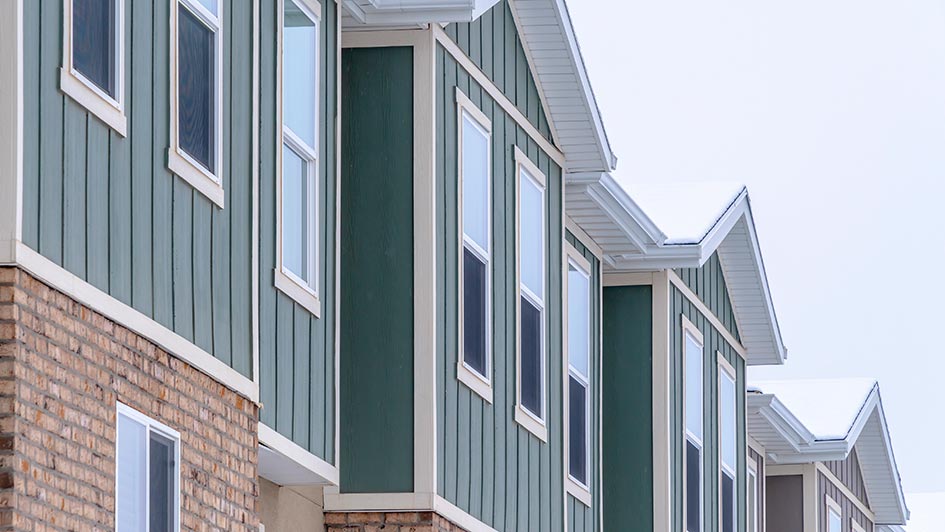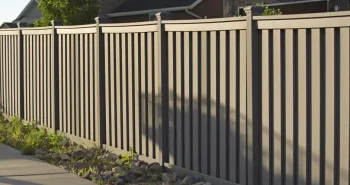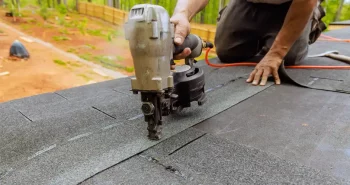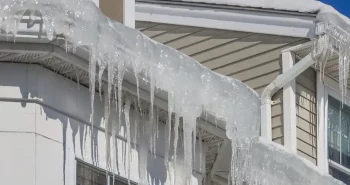Choosing Between Vertical and Horizontal Siding Installation: Which is Right for You?
As a homeowner, it can feel like you’re constantly making decisions regarding the aesthetics and function of your home. If something breaks or goes wrong, you need to fix it to avoid further problems. If your home is older and starting to look a little outdated, you might be interested in updating appliances, replacing your roof, or getting new siding installed. The list seems to go on, but some upgrades make a bigger difference than others—especially siding. While doing research on your siding options, you’ll find that there are actually different ways it can be installed. While many of us are used to traditional horizontal siding that’s seen in residential homes, there are other options. In this article, we’ll go over the process of choosing between vertical and horizontal siding installation and give you a few tips to help you determine which is right for you.
What is Vertical Siding?
Vertical siding is a less traditional option for home siding installation. There isn’t any difference in the actual material of siding, but the installation is different, and the end results create an unconventional look. Vertical siding requires more complex installations to avoid any leaks and long-term damage. You can install almost every type of siding vertically.
Different Types of Vertical Siding
Vertical siding can be installed using any type of siding material. The most popular type of vertical siding is vinyl. Vinyl vertical siding is one of the most cost-effective siding solutions and comes in a variety of different styles, colors, and sizes. It’s durable and often lasts for decades. Vertical wood siding is another option for homeowners however, it’s more expensive and can result in pricey installation jobs on larger homes. There are different types of wood siding, but the most popular option is cedar. Another type of vertical siding that’s gaining popularity is fiber cement siding. Vertical fiber cement siding offers a very unique look, but the installation process is complex and it’s therefore, one of the most expensive options for siding installation regardless of if it’s vertical or horizontal.
Board and Batten siding runs vertically on your home and comes in a variety of materials. It’s a great option if you’re looking for a rustic, yet modern look.
Benefits of Vertical Siding
One of the main benefits of installing vertical siding is the unique appearance it gives your home. The vertical installation creates an illusion that makes your home seem longer. While you might not think that this makes a big difference, it does—especially if both of your neighbors have horizontal siding.
Another benefit of vertical siding is cleaning and maintenance. Cleaning vertical siding is much easier than horizontal siding and can be done quickly without hassle. This, in turn, can save you time, money, and energy over time.
A Few Cons of Vertical Siding
The main con of vertical siding is the complexity of installation. With any labor job, complexity increases cost. Vertical siding costs more money than horizontal siding and you need to ensure that you find a reputable siding company with experience installing vertical panels. Since the furring strips are an extra material needed, this will also increase costs. Finally, if you do want to sell your home in the future, vertical siding may limit buyer interest. Since many people prefer a conventional home, the uniqueness that vertical siding offers can be off-putting for some.
What is Horizontal Siding?
Horizontal siding is the more traditional type of siding that you see on almost all residential homes. It’s easy to install, durable, and is available in many different materials and styles.
Different Types of Horizontal Siding
Horizontal siding is also available in vinyl, woods like cedar, and fiber cement. You can also install shake siding to add unique texture to your home or lap siding. Lap siding can be installed in Hardie, vinyl, LP, cedar, pine, or metal depending on your aesthetic goals.
Benefits of Horizontal Siding
The primary benefit of horizontal siding is the cost. Horizonal siding is much more affordable due to the installation process. Installation is also faster and will help you transform your home’s aesthetics on a budget without much interference to your everyday routine. A lot of homeowners prefer the traditional appearance of horizontal siding.
Downfalls of Horizontal Siding
The primary downfall of horizontal siding is water damage. Since the edges are horizontally aligned, water can get trapped and leak between the siding panels. Over time, this can cause your siding to warp and creates a more inviting environment for mold and mildew growth. While horizontal siding can last for many years, you’ll need to make sure that you’re taking the proper proactive maintenance measures to get the most out of them. Horizontal cleaning is a little more difficult to clean since you’ll need to clean the edges. Using a power washer can help, but make sure that you understand how to clean your siding material before getting started.
Which is Right for You?
If you’re thinking about getting new siding for your home or are in the process of building a new home, it’s important to consider all of your options. While vertical and horizontal siding both have their benefits, many homeowners are still unsure about which option is right for them. To help you choose, there’s a few things that you should take into consideration.
Create a Vision for Your Home
How do you want your home to look? Are you aiming for a more traditional, classical style or are you trying to create a more unique aesthetic? Horizontal siding is more traditional and is what you’ll see on many residential homes. Vertical siding is used to create a specific design that creates an elongated illusion. If you plan to move in the future, homebuyers might not enjoy the look of vertical siding. However, there are plenty of people who don’t even realize that vertical siding is an option and find it aesthetically pleasing once installed. If you’re looking for commercial siding, vertical tends to be used more often.
Think About Longevity
Horizontal siding is fairly durable, but over time the planes become more vulnerable to damages from rain or water. Moisture can get trapped in horizontal edges and therefore, may need to be replaced more often. With horizontal siding, water will slide off and you won’t have to worry about longevity issues.
Create a Budget
Determine what your budget is for siding installation. Horizontal siding is generally cheaper than vertical siding due to the underlying installation process. Vertical siding requires furring strips to make sure that everything turns out smooth and properly aligned. If your budget doesn’t allow for an entire house with vertical siding, but you know that you want to incorporate it, look at your options for a mixed look. This works best on two-story homes that are adorned with gables or gambrels.
Ease of Installation
Since horizontal siding is more conventional, many siding professionals are more comfortable with the installation process. It’s fairly straightforward and experienced professionals can complete the installation without incident in short periods of time. Vertical siding requires more steps, including the installation of furring strips, which makes the installation process a little more complicated. If you’re interested in vertical siding, just make sure that your siding professional is experienced in this technique to avoid problems and achieve a smooth, level look once finished.
Long-Term Maintenance
It’s important to also consider long-term maintenance requirements of both horizontal and vertical siding. While maintenance for siding in general is fairly simple and straightforward, horizontal siding requires a little more complexity when cleaning. This is simply because of the horizontal edges. As we mentioned, water can get trapped in them and therefore, so can dirt. The maintenance of your siding will also be impacted by the materials you choose with vinyl siding requiring the least work.
Regardless of if you want horizontal or vertical siding, you need to find a professional that has the experience for seamless installation resulting in a beautiful finish. First Star Exteriors offers both vertical and horizontal siding installation in a variety of materials. All of our siding options are available in multiple colors and styles to perfectly complement your home’s aesthetics. If you’re interested in learning about cost or aren’t sure which type of siding will work best for your home, don’t hesitate to reach out to us today.
At First Star Exteriors, we believe there’s a perfect balance between hands-on, personable treatment, quality of work, and speed of delivery. We take the time to understand your needs and communicate effectively from the initial quote to the last siding pane installed. To learn more about our vertical and horizontal siding options or to get a quote from us today within 48 hours, contact us at (479) 267-4800 or fill out our contact form here.





